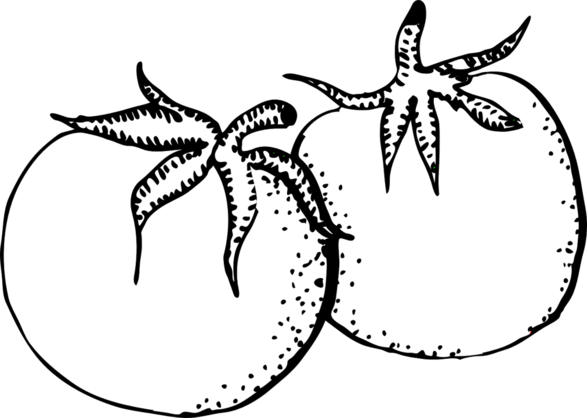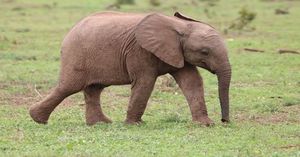Difference between revisions of "Chapter 2: Relative Space and Time"
(Creating outline for Playgroup 1 - Chapter 2) |
(Added Category) |
||
| (41 intermediate revisions by the same user not shown) | |||
| Line 1: | Line 1: | ||
| − | == | + | This chapter introduces children to concepts like '''''behind-in front''''', '''''inside-outside''''' and '''''earlier-later''''' that help in understanding Space and Time in a relative context. The understanding is facilitated using various physical and mental activities that encourage '''''awareness of the surrounding''''' and emphasizes on their '''''observation and articulation skills'''''. |
| + | |||
| + | == Behind and In front of == | ||
| + | [[File:Behind.PNG|frameless]] Cat is '''''behind''''' the hut | ||
| + | |||
| + | [[File:In front.PNG|frameless]] Dog is '''''in front of''''' the hut | ||
| + | [[File:Behind-front.PNG|border|frameless|center]] | ||
| + | Cloud is '''''behind''''' the mountain. | ||
| + | |||
| + | Tree is '''''in front of''''' the mountain. | ||
| + | |||
| + | === Colour Play === | ||
| + | [[File:Behind Colour 1.jpg|left|frame|<big>Colour the one '''''behind'''''</big>|438x438px]] | ||
| + | [[File:Behind_Colour_2.png|center|587x587px|<big>Colour the one '''''in front'''''</big> |thumb]] | ||
| + | |||
| + | === Classroom Activity === | ||
| + | * Explain the classroom surrounding using the words 'behind' and 'in front' | ||
| + | Eg. The black board is behind the teacher. The table is in front of the teacher. | ||
| + | * Make the children stand in a straight line (one behind the other) and ask the following: | ||
| + | Name the person in front of you and the one behind you. | ||
| + | Shuffle their positions and repeat the same question. | ||
| + | |||
| + | === Playtime at Home === | ||
| + | Play hide and seek with your friends at home and '''''name the things you hid behind'''''. | ||
| + | Note: The names can be discussed in class to reinforce the concepts from Chapter 1. | ||
| + | Eg. Things you hide behind are bigger than you. | ||
| + | |||
| + | === Outdoor Activity === | ||
| + | Visit a public place to understand the concept of a '''''queue'''''. | ||
| + | For eg. Bus stand. | ||
| + | |||
| + | === Samskrit Vocabulary === | ||
| + | In front - पुरतः | | ||
| + | |||
| + | Behind - पृष्ठतः | | ||
== Inside and Outside == | == Inside and Outside == | ||
| + | [[File:Inside Outside.PNG|border|frameless]] Fruits are '''''inside''''' the basket. Flowers are '''''outside''''' the basket. | ||
| + | |||
| + | [[File:Inside Outside 2.PNG|border|frameless]] Boy is '''''inside''''' the house. Cycle is '''''outside''''' the house. | ||
| + | |||
| + | === Sorting Activity === | ||
| + | [[File:Sorting inside.jpg|border|frameless]] Circle the rabbits '''''inside''''' the basket. | ||
| + | |||
| + | [[File:Sorting outside 2.png|border|frameless]] Circle the flowers '''''outside''''' the bouquet. | ||
| + | |||
| + | [[File:Sorting outside.png|border|frameless]] Circle the animals '''''inside''''' the shed. | ||
| + | |||
| + | === Classroom Activity === | ||
| + | Make two groups of children and ask them to take turns in naming things '''''inside and/or outside''''' the classroom respectively. | ||
| + | Note: This increases awareness of their surrounding as well as vocabulary. | ||
| + | |||
| + | === Playtime === | ||
| + | Children can be introduced to the play of '''''Kancha (Marbles)'''''. Also known as Golli, Goti and Lakhoti'',''<ref name=":0">[https://parenting.firstcry.com/articles/magazine-15-traditional-games-of-india-that-probably-internet-generation-dont-know/ 15 Traditional Indian Games]</ref> Kancha is a traditional Indian game<ref name=":1">[https://sites.google.com/a/gsbi.org/gvc1419/recreational-activities/kancha Kancha]</ref> that involves the use of round glass marbles or kanchas. Several children can participate at a time in this game. The objective here is to collect the maximum number of marbles.<ref name=":0" /> There are various ways of playing this game. | ||
| + | * In the most simple version, a circle in drawn on the ground and all the marbles (except one) are placed '''''inside''''' the circle. Using the remaining single marble, each child should try to move the marbles '''''outside''''' the circle by throwing the marble into the circle. Any marbles they knock out of the circle, belongs to them. This play rotates from one child to another until all marbles are claimed. It helps if the shooting marble is of a different color from the marbles in the circle. | ||
| + | Shooting technique: Bend your index or middle finger backward slightly, place the marble on the fingertip, and release the finger which will shoot the marble forward.<ref>[https://maranatha.org/wp-content/uploads/2019/01/KFC-January-2019-Game.pdf Kanche]</ref> | ||
| + | * Alternatively, a circle is drawn and marbles are placed '''''inside''''' it to form the pattern 'X'. Children should try to scatter the marble formation by throwing a marble inside the circle using their thumb and knuckles. The number of marbles in the ‘X’ pattern that move when the marble is thrown belongs to the child. However, if any of the marbles go '''''outside''''' the circle, it has to be placed back inside the circle in the centre. Taking turns, the game continues till there are no more marbles to be claimed.<ref>[https://flintobox.com/blog/child-development/21-outdoor-games-kids Outdoor Games]</ref> | ||
| + | |||
| + | * In another version, on a leveled even ground, a small hole is dug up. Children should kneel down away from the hole and try to send the marble '''''inside''''' the hole. For this, the marble is to be held tightly to the forefinger of the left hand. Then, stretching the finger back by the pressure of the forefinger of the right hand, the marble is released pushing the other marble into the hole. Taking turns, children should aim to push all the marbles inside the hole.<ref name=":1" /> | ||
| + | Note: This game also subtly introduces children to an understanding of distance, force and speed. | ||
| + | |||
| + | === Home Activity === | ||
| + | Help your mother fill in groceries '''''inside''''' boxes. For eg. Grains, Pulses, etc. | ||
| + | |||
| + | === Samskrit Vocabulary === | ||
| + | Inside - अन्तः | | ||
| − | == | + | Outside - बहिः | |
| + | {{Box-round|align="center"|title=Story time: '''''Inside''''' Shri Krishna's Mouth...|content=One day when Shri Krishna was playing with his friends and Balarama, all of them came together and told mother Yashoda that Krishna had eaten mud. Hearing this, mother Yashoda held Krishna by the hand to scold him for his own good. She said, | ||
| + | |||
| + | <blockquote>''Oh child, why did you eat mud ? All your friends including your elder brother Balarama say so.''</blockquote> | ||
| + | |||
| + | Shri Krishna said, | ||
| + | |||
| + | <blockquote>''Oh mother, I never ate mud. If you think so, then please look '''inside''' my mouth and examine it.''</blockquote> | ||
| + | |||
| + | Mother Yashoda then said to Krishna, | ||
| + | |||
| + | <blockquote>''If you have not eaten mud, then open your mouth wide.''</blockquote> | ||
| + | |||
| + | Listening to his mother, when Krishna opened his mouth wide, mother Yashoda saw the entire universe '''''inside''''' Shri Krishna's mouth. She saw mountains, oceans, the moon, stars and many other things. She even saw Vraja (Vrndavana) including herself there. Seeing all this, mother Yashoda was surprised. She realised that her son was not an ordinary child. He is Bhagavan himself. She then placed him on her lap and showered all her motherly affection on him. | ||
| + | |||
| + | '''Moral''': Always listen to your parents.<ref name=":2">[https://parenting.firstcry.com/articles/top-15-childhood-krishna-stories-kids/ Top 14 Lord Krishna Stories for Kids.]</ref> | ||
| + | }} | ||
| + | '''''Source:''''' Shrimad Bhagavata Purana, Skandha 10, Adhyaya 8, Verses 32-45.<ref>[https://theharekrishnamovement.org/2016/01/14/lord-k%E1%B9%9B%E1%B9%A3%E1%B9%87a-shows-the-universal-form-within-his-mouth/ Lord Krishna Shows the Universal Form Within His Mouth.]</ref><ref>C.L.Goswami (1997), Srimad Bhagavata Mahapurana (Part 2), Gorakhpur: Gita Press.</ref> | ||
== Earlier and Later == | == Earlier and Later == | ||
| + | {| class="wikitable" | ||
| + | !Earlier | ||
| + | !Later | ||
| + | |- | ||
| + | | | ||
| + | [[File:Earlier 1.png|border|frameless]] | ||
| + | |[[File:Later 1.png|border|frameless]] | ||
| + | |- | ||
| + | |[[File:Earlier 2.jpg|border|frameless]] | ||
| + | |[[File:Later 2.jpg|border|frameless]] | ||
| + | |- | ||
| + | |[[File:Earlier 3.jpg|border|frameless]] | ||
| + | |[[File:Later 3.jpg|border|frameless]] | ||
| + | |- | ||
| + | | | ||
| + | [[File:Earlier 4.jpg|border|frameless]] | ||
| + | |[[File:Later 4.png|border|frameless]] | ||
| + | |} | ||
| + | |||
| + | === Classroom Activity === | ||
| + | Reinforcing concepts of '''''Earlier''''' and '''''Later''''' by demonstrating various action words like, | ||
| + | * Going - Coming | ||
| + | * Standing - Sitting | ||
| + | * Walking - Running | ||
| + | * Jumping - Falling | ||
| + | * Eating - Drinking | ||
| + | * Reading - Writing | ||
| + | * Speaking - Singing | ||
| + | For eg. '''''Earlier''''' teacher was standing. '''''Later''''' the teacher sat down. | ||
| + | |||
| + | === Nurturing Activity === | ||
| + | Sow a seed, water it everyday and observe it grow into a beautiful plant. This reinforces that, | ||
| + | Something that was a seed '''''earlier''''', '''''later''''' transformed into a beautiful plant. | ||
| + | |||
| + | === Observe and Learn === | ||
| + | Visit a park. Observe and Describe how was it when you entered and how was it when you left. | ||
| + | For eg. | ||
| + | * Earlier it was bright. Later it became dark. | ||
| + | * Earlier there were less children. Later more children came. | ||
| + | Note: Such activities emphasize on their observation and articulation skills. | ||
| + | |||
| + | === Samskrit Vocabulary === | ||
| + | Earlier - पूर्वम् | ||
| + | |||
| + | Later - पश्चात् | ||
| + | |||
| + | {{Box-round|align="center"|title=Story time: Samudra Manthan|content=Once the devas and the daityas decided to churn the ocean in order to obtain amrta. For that, they placed the Mandara mountain in the ocean as the churning rod and invited Vasuki, the Raja of serpents to serve as the churning rope. Winding him around the mountain, the daityas held the hood-side of the serpant Vasuki while the devas held the tail-side. As they began churning, the mountain began to sink into the ocean due to its weight. At that time Bhagavan Vishnu took the form of a giant tortoise (Kurma-avatara), entered the water and lifted up the mountain on his back. The Suras and Asuras then continued to churn the mountain strongly. Due to this, Vasuki, hissing violently in all directions, spitted fire and smoke from his thousands of hoods. However, Bhagavan Vishnu made it rain profusely with breezes blowing clouds of vapor that originated from the waves of the ocean that settled the surrounding. | ||
| + | |||
| + | The first thing the churning produced was a very strong poison called '''''Halahala'''''. Also known as Kalakutha, it unstoppably spread itself in all directions scaring all the people. People then sought the shelter of Ishvara Shiva. Mahadeva then proceeded to drink the poison for the welfare of all. It is then that his throat turned blue due to the effect of the poison and he came to be known as Neelakantha. | ||
| + | |||
| + | After the poison came the cow named Surabhi or '''''Kamadhenu''''' who was known to give in plenty. Then came a horse as white as the moon named '''''Ucchaishrava''''' followed by the great elephant '''''Airavata'''''. After that appeared a valuable lotus-hued gem known as the '''''Kaustubha jewel''''' that Shri Hari wore on his chest. Then came the '''''Parijata tree''''' that fulfills every wish. Next, the '''''Apsaras''''' adept in the arts of music and dance came forth. '''''Devi Lakshmi''''' then manifested followed by another '''''devi Varuni'''''. And then finally, '''''Dhanvantari''''' (the presiding deity of medicine) appeared holding the pot filled with '''''Amrta''''' in his hands. | ||
| + | }} | ||
| + | Source: Shrimad Bhagavata Purana, Skanda 8, Adhyayas 6 to 8.<ref>[http://www.srimadbhagavatam.org/canto8/chapter6.html Shrimad Bhagavatam]</ref> | ||
| + | |||
| + | === Understand the Story === | ||
| + | Various valuable things came out of the Samudra Manthan. Tick the one that came '''''earlier'''''. | ||
| + | # Airavata | ||
| + | # Apsaras | ||
| + | # Amrta | ||
| + | Which of the following happened '''''later''''' ? | ||
| + | # Appearance of Devi Lakshmi | ||
| + | # Appearance of Dhanvantari | ||
| + | # Appearance of Devi Varuni | ||
| − | == | + | == References == |
| + | <references /> | ||
| + | [[Category:Education Series]] | ||
Latest revision as of 19:51, 11 November 2020
This chapter introduces children to concepts like behind-in front, inside-outside and earlier-later that help in understanding Space and Time in a relative context. The understanding is facilitated using various physical and mental activities that encourage awareness of the surrounding and emphasizes on their observation and articulation skills.
Behind and In front of
Cat is behind the hut
Dog is in front of the hut
Cloud is behind the mountain.
Tree is in front of the mountain.
Colour Play
Classroom Activity
- Explain the classroom surrounding using the words 'behind' and 'in front'
Eg. The black board is behind the teacher. The table is in front of the teacher.
- Make the children stand in a straight line (one behind the other) and ask the following:
Name the person in front of you and the one behind you.
Shuffle their positions and repeat the same question.
Playtime at Home
Play hide and seek with your friends at home and name the things you hid behind.
Note: The names can be discussed in class to reinforce the concepts from Chapter 1.
Eg. Things you hide behind are bigger than you.
Outdoor Activity
Visit a public place to understand the concept of a queue.
For eg. Bus stand.
Samskrit Vocabulary
In front - पुरतः |
Behind - पृष्ठतः |
Inside and Outside
Fruits are inside the basket. Flowers are outside the basket.
Boy is inside the house. Cycle is outside the house.
Sorting Activity
Circle the rabbits inside the basket.
Circle the flowers outside the bouquet.
Circle the animals inside the shed.
Classroom Activity
Make two groups of children and ask them to take turns in naming things inside and/or outside the classroom respectively.
Note: This increases awareness of their surrounding as well as vocabulary.
Playtime
Children can be introduced to the play of Kancha (Marbles). Also known as Golli, Goti and Lakhoti,[1] Kancha is a traditional Indian game[2] that involves the use of round glass marbles or kanchas. Several children can participate at a time in this game. The objective here is to collect the maximum number of marbles.[1] There are various ways of playing this game.
- In the most simple version, a circle in drawn on the ground and all the marbles (except one) are placed inside the circle. Using the remaining single marble, each child should try to move the marbles outside the circle by throwing the marble into the circle. Any marbles they knock out of the circle, belongs to them. This play rotates from one child to another until all marbles are claimed. It helps if the shooting marble is of a different color from the marbles in the circle.
Shooting technique: Bend your index or middle finger backward slightly, place the marble on the fingertip, and release the finger which will shoot the marble forward.[3]
- Alternatively, a circle is drawn and marbles are placed inside it to form the pattern 'X'. Children should try to scatter the marble formation by throwing a marble inside the circle using their thumb and knuckles. The number of marbles in the ‘X’ pattern that move when the marble is thrown belongs to the child. However, if any of the marbles go outside the circle, it has to be placed back inside the circle in the centre. Taking turns, the game continues till there are no more marbles to be claimed.[4]
- In another version, on a leveled even ground, a small hole is dug up. Children should kneel down away from the hole and try to send the marble inside the hole. For this, the marble is to be held tightly to the forefinger of the left hand. Then, stretching the finger back by the pressure of the forefinger of the right hand, the marble is released pushing the other marble into the hole. Taking turns, children should aim to push all the marbles inside the hole.[2]
Note: This game also subtly introduces children to an understanding of distance, force and speed.
Home Activity
Help your mother fill in groceries inside boxes. For eg. Grains, Pulses, etc.
Samskrit Vocabulary
Inside - अन्तः |
Outside - बहिः |
Story time: Inside Shri Krishna's Mouth...
Oh child, why did you eat mud ? All your friends including your elder brother Balarama say so.
Shri Krishna said,
Oh mother, I never ate mud. If you think so, then please look inside my mouth and examine it.
Mother Yashoda then said to Krishna,
If you have not eaten mud, then open your mouth wide.
Listening to his mother, when Krishna opened his mouth wide, mother Yashoda saw the entire universe inside Shri Krishna's mouth. She saw mountains, oceans, the moon, stars and many other things. She even saw Vraja (Vrndavana) including herself there. Seeing all this, mother Yashoda was surprised. She realised that her son was not an ordinary child. He is Bhagavan himself. She then placed him on her lap and showered all her motherly affection on him.
Moral: Always listen to your parents.[5]Source: Shrimad Bhagavata Purana, Skandha 10, Adhyaya 8, Verses 32-45.[6][7]
Earlier and Later
| Earlier | Later |
|---|---|
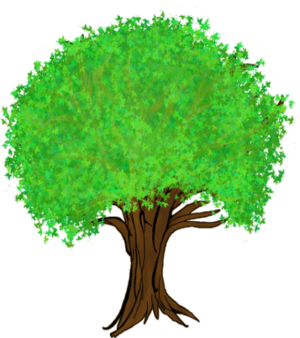
| |
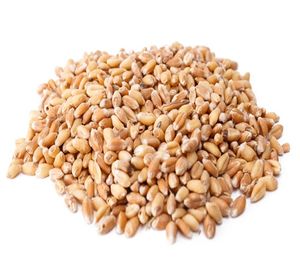
|
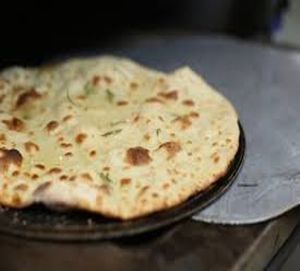
|
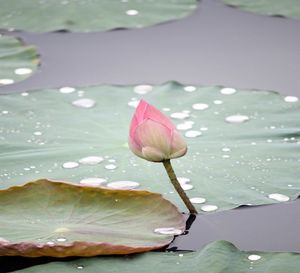
|
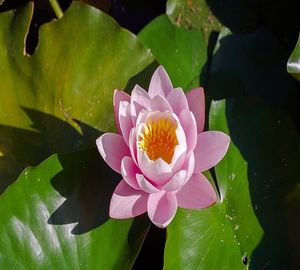
|
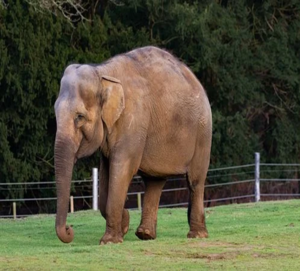
|
Classroom Activity
Reinforcing concepts of Earlier and Later by demonstrating various action words like,
- Going - Coming
- Standing - Sitting
- Walking - Running
- Jumping - Falling
- Eating - Drinking
- Reading - Writing
- Speaking - Singing
For eg. Earlier teacher was standing. Later the teacher sat down.
Nurturing Activity
Sow a seed, water it everyday and observe it grow into a beautiful plant. This reinforces that,
Something that was a seed earlier, later transformed into a beautiful plant.
Observe and Learn
Visit a park. Observe and Describe how was it when you entered and how was it when you left.
For eg.
- Earlier it was bright. Later it became dark.
- Earlier there were less children. Later more children came.
Note: Such activities emphasize on their observation and articulation skills.
Samskrit Vocabulary
Earlier - पूर्वम्
Later - पश्चात्
Story time: Samudra Manthan
The first thing the churning produced was a very strong poison called Halahala. Also known as Kalakutha, it unstoppably spread itself in all directions scaring all the people. People then sought the shelter of Ishvara Shiva. Mahadeva then proceeded to drink the poison for the welfare of all. It is then that his throat turned blue due to the effect of the poison and he came to be known as Neelakantha.
After the poison came the cow named Surabhi or Kamadhenu who was known to give in plenty. Then came a horse as white as the moon named Ucchaishrava followed by the great elephant Airavata. After that appeared a valuable lotus-hued gem known as the Kaustubha jewel that Shri Hari wore on his chest. Then came the Parijata tree that fulfills every wish. Next, the Apsaras adept in the arts of music and dance came forth. Devi Lakshmi then manifested followed by another devi Varuni. And then finally, Dhanvantari (the presiding deity of medicine) appeared holding the pot filled with Amrta in his hands.Source: Shrimad Bhagavata Purana, Skanda 8, Adhyayas 6 to 8.[8]
Understand the Story
Various valuable things came out of the Samudra Manthan. Tick the one that came earlier.
- Airavata
- Apsaras
- Amrta
Which of the following happened later ?
- Appearance of Devi Lakshmi
- Appearance of Dhanvantari
- Appearance of Devi Varuni
References
- ↑ 1.0 1.1 15 Traditional Indian Games
- ↑ 2.0 2.1 Kancha
- ↑ Kanche
- ↑ Outdoor Games
- ↑ Top 14 Lord Krishna Stories for Kids.
- ↑ Lord Krishna Shows the Universal Form Within His Mouth.
- ↑ C.L.Goswami (1997), Srimad Bhagavata Mahapurana (Part 2), Gorakhpur: Gita Press.
- ↑ Shrimad Bhagavatam


